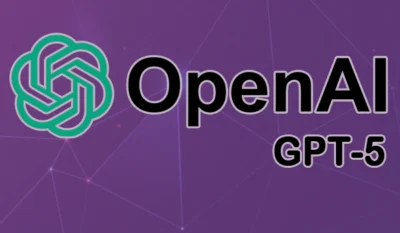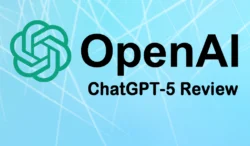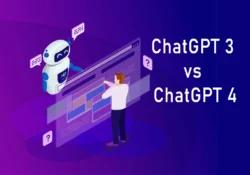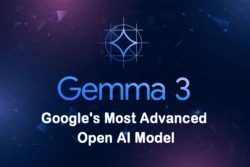
San Francisco, CA - Aug 07, 2025 (UTC) - OpenAI has unveiled GPT-5, its most advanced generative AI model to date, during a highly anticipated livestream event on August 7, 2025. Billed as a monumental leap forward, GPT-5 integrates cutting-edge reasoning, enhanced multimodal capabilities, and unprecedented customization options, positioning it as a game-changer for both consumer and enterprise applications. Here’s an in-depth exploration of GPT-5’s features, advancements, and implications for the AI landscape.
A Unified AI Powerhouse
GPT-5 marks a significant evolution by merging the reasoning capabilities of OpenAI’s o-series models (e.g., o3 and o4) with the language and multimodal strengths of the GPT-series. This unification eliminates the need for users to toggle between specialized models for tasks like coding, analytical reasoning, or creative content generation. According to OpenAI’s Head of Developer Experience, Romain Huet, “GPT-5 combines the breakthroughs in reasoning from the o-series with the multimodal advancements of the GPT-series, delivering a seamless, all-in-one intelligence system.” The model dynamically optimizes for speed, cost, and quality, adapting to the complexity of each query in real time.
This unified approach allows GPT-5 to handle a wide range of tasks, from casual conversations to intricate software development, with improved efficiency. For instance, during the launch demo, GPT-5 generated a fully functional French-learning website—complete with interactive audio, visuals, and text—in under 10 minutes, showcasing its ability to manage multi-step, cross-domain workflows with ease.
Breakthroughs in Reasoning and Accuracy
One of GPT-5’s standout features is its advanced chain-of-thought reasoning, which enables it to break down complex problems into logical steps, rivaling human-level performance in fields like mathematics, science, and data analysis. Early benchmarks shared by OpenAI indicate that GPT-5 significantly outperforms its predecessor, GPT-4o, in tasks requiring deep analytical thinking, such as solving graduate-level math problems or analyzing scientific datasets.
A key focus of GPT-5’s development was reducing hallucinations—instances where AI generates plausible but incorrect information. OpenAI has implemented a “safe completions” framework, ensuring responses are more factually grounded, particularly for sensitive domains like health and finance. When faced with queries outside its knowledge base or safety boundaries, GPT-5 provides transparent explanations, such as, “I can’t access real-time medical records, but I can explain general principles of diabetes management.” This transparency enhances user trust and usability.
Multimodal Capabilities: Beyond Text
Building on the multimodal foundation of GPT-4o, GPT-5 excels in processing and generating text, images, and voice interactions. While native video generation is not yet supported, OpenAI hinted at future integration with its SORA text-to-video model, which could enable GPT-5 to create dynamic video content. The model’s image processing has been refined, allowing it to analyze and generate high-quality visuals with greater detail and context awareness. For example, during the launch, GPT-5 interpreted a complex infographic and provided a concise summary, demonstrating its ability to extract meaning from visual data.
Voice mode, now available to all ChatGPT users, has been overhauled for natural, human-like interactions. Users can engage in fluid conversations, interrupt the model mid-response, or request summaries of complex topics in specific formats—like reducing Pride and Prejudice to a single word: “Love.” The voice system also supports multiple languages and accents, making it more accessible globally.
Coding Prowess: A Developer’s Dream
GPT-5 has been hailed as a revolutionary tool for software engineers. Its ability to generate, debug, and optimize complex code sets it apart from competitors like Anthropic’s Claude 4 Sonnet and DeepSeek’s R1. During the launch event, OpenAI showcased GPT-5 writing over 200 lines of Python code for a web application, incorporating best practices like modular design and error handling. The model also excels in debugging, identifying errors in real-time and suggesting precise fixes.
For developers, GPT-5’s integration with OpenAI’s Canvas tool—a logic and code workflow interface—streamlines iterative development. Canvas allows users to refine code or text in a collaborative environment, with GPT-5 providing real-time suggestions. Early feedback from developers highlights GPT-5’s ability to handle full-stack development tasks, from front-end UI design to back-end database queries, with minimal human intervention.
Personalization and User Experience
GPT-5 introduces unprecedented customization options, making it one of the most user-centric AI models to date. ChatGPT users can now choose from four personality settings: Default (neutral and conversational), Cynic (skeptical and witty), Empathetic (warm and supportive), and Analytical (data-driven and precise). Paid subscribers (Plus, Pro, Team, Enterprise, and Edu) can further personalize the interface with color schemes and connect GPT-5 to Google accounts for seamless integration with Gmail and Google Calendar. For example, GPT-5 can pull calendar events to remind users of meetings or draft email responses based on inbox context.
These features are rolling out in phases, with Pro subscribers gaining first access, followed by Plus and Team users. Free-tier users will also benefit from unlimited access to GPT-5 at standard intelligence levels, ensuring broad accessibility.
Availability and API Integration
GPT-5 is available across multiple platforms, including ChatGPT, the OpenAI API, and the GitHub Models Playground. The API offers mini and nano versions of GPT-5 for lightweight applications, such as chatbots or embedded systems, while the full model supports enterprise-grade workloads. OpenAI has also released open-weight models, gpt-oss-120b and gpt-oss-20b, to empower researchers and developers to build custom solutions.
Free-tier users can access GPT-5 with standard intelligence settings, while paid subscribers unlock higher intelligence levels for more complex tasks. Enterprise and Edu plans include additional features like priority support and compliance with industry-specific regulations.
Safety and Ethical Considerations
OpenAI has prioritized safety in GPT-5’s development, incorporating feedback from red-teaming exercises and external audits. The model adheres to strict safety protocols, refusing to generate harmful or misleading content. For instance, when asked about dangerous activities, GPT-5 responds with clear boundaries, such as, “I can’t assist with generating instructions for illegal activities, but I can provide information on legal alternatives.” Ongoing safety testing ensures the model evolves to address emerging risks.
Competitive Edge in a Crowded Market
The launch of GPT-5 comes at a time of intense competition in the AI industry. Google’s Gemini 3.0, Anthropic’s Claude 4 Sonnet, and DeepSeek’s R1 have all made strides in reasoning and efficiency. However, early comparisons suggest GPT-5 outperforms these models in software engineering, scientific reasoning, and multimodal tasks. Posts on X from AI enthusiasts and developers highlight GPT-5’s superior code generation and reduced latency compared to Claude 4, with one user noting, “GPT-5 just wrote a cleaner REST API than I could in an hour.”
OpenAI’s decision to unify reasoning and language capabilities gives GPT-5 a unique edge, addressing the fragmentation seen in other models that require separate systems for different tasks. By offering a single, scalable solution, OpenAI aims to solidify its leadership in the AI race.
Toward Artificial General Intelligence
While GPT-5 does not yet achieve the International Mathematical Olympiad gold-level performance of OpenAI’s specialized reasoning models, it represents a significant step toward artificial general intelligence (AGI). OpenAI’s CEO, Sam Altman, emphasized during the launch that GPT-5 is “a foundation for future advancements, bringing us closer to AI that can reason and learn like humans.” The model’s ability to handle diverse tasks with high accuracy and adaptability underscores this ambition.
Future Roadmap
OpenAI plans to enhance GPT-5 with native video processing and deeper integrations with tools like SORA and third-party platforms. The company is also exploring enterprise-specific features, such as custom data training for industries like healthcare and finance. For now, GPT-5’s rollout will focus on refining user experience and scaling infrastructure to meet global demand.
How to Access GPT-5
Users can experience GPT-5 immediately via ChatGPT, the OpenAI API, or the GitHub Models Playground. For developers interested in API access, visit OpenAI’s API portal. Pricing details for paid subscriptions are available at OpenAI’s website, though specific costs for Plus, Pro, Team, and Enterprise plans were not disclosed during the launch.
Conclusion
GPT-5 is a bold step forward for OpenAI, combining unparalleled reasoning, multimodal capabilities, and user-centric features into a single, powerful model. Its launch reaffirms OpenAI’s commitment to advancing AI innovation while prioritizing accessibility and safety. As the AI landscape continues to evolve, GPT-5 sets a new benchmark for what intelligent systems can achieve, paving the way for transformative applications in education, development, and beyond.





